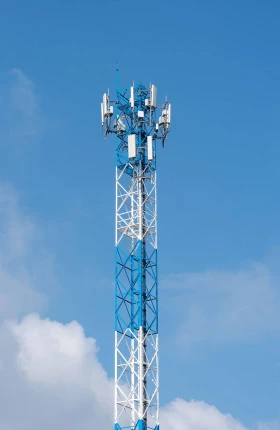In an age of always-on connectivity, copper is giving way to fiber. Companies must forge a phaseout strategy that maintains their customer base and growth prospects.
The telecommunications industry is never easy to navigate. Competition is heated, regulations are complex and uncertain, and customer preferences are altered by frequent technological advances. Now, in addition to those ongoing challenges, telecom firms are faced with a particularly thorny problem that is rapidly becoming a priority: what to do about aging copper networks. In today’s always-on environment, network bandwidth, durability, range, and speed are critical service components.
For telecom companies, shifting to fiber-optic networks, which outpace copper ones in each of these critical areas, is inevitable. But the way telecom companies go about moving to fiber—the strategic planning and customer outreach that they do, as well as the tradeoffs that they make—will determine their degree of success: do they only maintain current revenue and profitability levels, or do they improve their performance during this challenging changeover.
Although there is growing consensus that the copper era is ending, companies are divided about the path to take. Some hope to postpone installing fiber networks as long as possible to avoid upheaval in their customer base and operations. Other companies are more aggressive, decommissioning copper as quickly as possible and taking the hits in revenue and costs, hoping to get a head start. In both cases, though, the efforts tend to be haphazard and not thought out well enough or balanced sufficiently to get the best possible outcomes.
BCG’s experience tells us that there is a better way to shift from copper to fiber—a way that optimizes results and minimizes internal and market disruption. This approach is designed to phase out copper completely within a short period, maximize revenue generation from fiber infrastructure, reduce costs by 25% in one to two years, and minimize negative customer reactions.
Phasing Out Copper
Companies oftentimes try to find a balance between an aggressive transition to fiber and a slow one. They decide to actively migrate customers to fiber as quickly as possible, but they also continue to service legacy copper accounts while steadily working to reduce their numbers. The reasons for taking this approach vary. For instance, a telecom firm with many customers subscribing to both fixed-copper-line and mobile services may not want to upset these synergies and risk losing customers. Other companies may move more slowly because they don’t have ready access to fiber or because in a particular region, the costs of a new wiring project are prohibitive.
But those reasons are exceptions. On the whole, for most companies, phasing out copper services in an aggressive, short- to mid-term time frame will help them achieve a high net present value (NPV).
Building out and deploying fiber networks relatively rapidly lets telcos thwart rivals’ attempts to pick off customers.
This strategy requires a three-phase plan to rapidly shift customers to a more profitable and churn-proof fiber platform (or in certain cases, to a mobile alternative or to a fixed-wireless option that does not use copper). But by implementing this plan, companies can avoid the painful incremental revenue losses of long-term customer leakage. And perhaps most important, the relatively rapid build-out allows telcos to deploy new fiber networks on pace with or ahead of competitors, thwarting rivals’ attempts to pick off customers by offering fiber first.
The first phase of this plan is commercial migration. Lasting from six months to as long as two years, this phase involves a marketing and sales incentive program designed to upsell customers so that they sign up for fiber to the home. In some cases, companies may offer discounted fixed-mobile packages or triple play (telephone, TV, and internet) bundles. The goal is to have the early-adopter customers subsidize the initial stages of the shift to fiber even if the revenue per customer in this group is a bit lower than normal.
The subsequent phase is technical migration, which can take about 12 months and involves moving all additional customers to fiber in a large rollout. A telco can initiate this phase after drawing up a coherent blueprint for installing fiber over a large area. The blueprint should include the coordination of vendors and installation teams at the lowest possible cost.
Ideally, to sign up the most customers for fiber and to minimize churn, the price of the fiber service should match the price that customers are paying for copper service, although higher fees could be imposed for faster network performance on a tiered basis. Telcos must also present this change as voluntary so that users do not feel like captive customers. In addition, telcos should provide ongoing support for corporate customers that feel this change will affect the reliability and functionality of their legacy networks. In particular, B2B accounts tend to make up the lion’s share of these special cases; their hesitation about changing over to fiber introduces the greatest amount of complexity into the process and requires additional handholding and education.
If this phase is handled correctly, only a few customers will try to delay, saying that they prefer to wait for the rollout in their area to be completed before signing up for fiber or that they are moving to another company. But those that do—even the B2B companies that are getting special treatment—should be given no longer than a few months grace, a period that could be called forced migration.
Eliminating Copper’s Costs
Aggressively phasing out copper services when it is possible is critical to achieving a high NPV. So, too, is quickly trimming the costs related to those services by decommissioning copper networks and growing customer revenue to the greatest degree possible.
Fiber networks are less prone than copper ones to breakdowns as a result of severe weather or other causes of high levels of moisture and heat. Fiber networks are also generally impervious to interference from external electronic signals. Hence, the cost of ownership and maintenance, as well as downtime frequency, are reduced significantly. And with a greater amount of user activity and technology implementations possible on fiber wires, the sooner fiber is installed, the more rapidly revenue per customer should increase.
The sooner that fiber is installed, the more quickly revenue per customer should increase.
From a cost perspective, we find that the best approach is to move large numbers of customers to fiber simultaneously, particularly those being served by the same central office, rather than individual customers from different areas. In fact, only 25% of the costs related to a single customer—mostly involving delivery and fault handling—is eliminated when the customer leaves the copper network. But an additional 50% of these costs are wrung out when the central site that delivers telecom services to the customer and others in the neighborhood is shuttered. These reduced expenses are mainly linked to maintenance and network technology management. The final 25% of cost savings can be gained when the lease runs out on the building that houses the central office.
But these savings are somewhat slow to accrue since they are not fully realized until the complete replacement of copper and the closure of the central office. However, telcos that have a well-prepared, organization-wide strategy to decommission their copper networks on a carefully planned timeline can accelerate and expand cost savings over the short term as the shift to fiber plays out. (See the exhibit.) For instance, by our calculation, as much as 40% of the costs allocated for new build-outs of copper networks can be saved by immediately stopping sales of new copper-wiring connections in areas that are slated to be decommissioned relatively soon. Being more tactical—for instance, by replacing copper with fiber sooner than originally planned when a municipal roadwork project requires the telco to move its lines—can also result in savings.
Another high-cost category is repairs and upkeep. Telcos can accrue savings of as much as 25% by aggressively phasing out large-scale nonemergency fault repairs and renovations for copper network customers in areas where utilization is low or where fiber cables are soon to be installed. In some cases, when breakdowns occur, companies could switch customers over to 4G routers as an interim solution until fiber is installed.
Planning Holistically
Accelerated cost cuts, aligned with a fiber-migration program, can only be successful if a telco has the capabilities to essentially juggle multiple aspects of a strategic shift at the same time. Indeed, the capabilities and participation required span the functional skills of the organization.
- Business Imperatives. Speed is essential, but the timetable is determined by the company’s customer base and market considerations. Depending on an area’s usage levels and revenue generation, as well as the availability of fiber in the area and the degree of difficulty to install fiber, a combination of soft migration and hard migration may have to be considered.
- Communications, Sales, and Marketing. Campaigns must be designed to move all customers toward copper-replacement products. The campaigns should target specific areas to let customers know that fiber is becoming available or broad areas to encourage early shifts from copper to fiber. The scheduling for these communications efforts must be aligned with regulatory requirements for customer notification and migration. And these campaigns should be crafted to maintain relationships with high-revenue customers, sometimes sacrificing low-revenue accounts, and with an eye toward encouraging customers, rather than strong-arming them.
- Product Development. Companies should design, pilot, and scale a wide variety of services and products to replace copper, including offerings in fixed, mobile, and converged categories to target customers in the B2C, B2B, and wholesale segments. Fiber network planning should be integrated with mobile programs for 4G and 5G rollouts as well as fiber wireless access (FWA) for areas where installing fiber is cost prohibitive. If FWA is necessary, telcos must be certain to secure necessary deals with spectrum owners.
- IT and Process Readiness. Technical migration must include developing protocols for copper-decommissioning preparedness and fiber installation, with strict quality controls and KPIs. Network rollout capacity and lead time for network expansion should be carefully determined. Creative technical solutions, such as setting up fiber-to-wireless base stations rather than central offices, should also be assessed.
Saying goodbye to copper is going to be difficult for telecom companies, even though it is certainly the right thing—the only option, really—to do. It is an enormous undertaking, multivariate, and huge in scale. The biggest mistake that telcos can make is going about this substantial disruption to them and their customers without a holistic plan that takes into account every challenge they will encounter and every opportunity that will present itself. Indeed, instead, often the challenges are feared and the opportunities are ignored. Approaching customer migration and copper decommissioning as a thoughtful and careful strategist can ensure that the priorities are in the right order, that preparation is thorough—and that nothing is overlooked.







